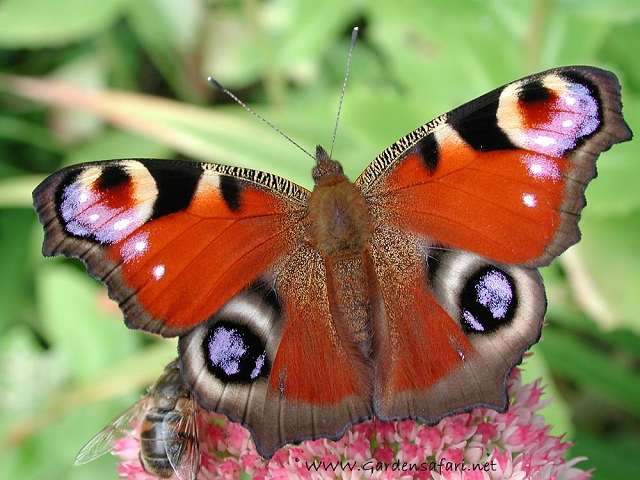(Sand and gravel pit)
Butterfly surveys were conducted at a total of 100 sites: 50 gravel pits in southern Poland, and 50 nearby grassland areas representing a typical alternative butterfly habitat. Count data were used to quantify butterfly numbers, abundance, diversity, and commonness (which reflects how often a species was seen across all surveys). Local and landscape-level habitat variables, including amount and type of vegetation, amount of nearby water, and distance to features such as forests and human infrastructure, were also quantified at each site in order to explore, more specifically, what factors might influence butterfly habitat choice.
(The grizzled skipper, or Pyrgus malvae, was one of 21 species more common in gravel pits than in nearby grassland areas)
Although butterfly abundances were similar in grassland sites and gravel pits, the latter had higher richness and diversity; further, species found in gravel pits were often locally rare, whereas those in grasslands were more likely to be common and widespread. Landscape characteristics did not explain butterfly diversity or commonness particularly well, but they did predict but richness and abundance. In particular, these variables were negatively impacted by isolation (or distance from other suitable habitats), but positively affected by age of gravel pit and shrub density. The former pattern suggests that neighboring habitat patches are used as "stepping stones" to reach gravel pits; the latter result indicates that butterflies benefit from the presence of shrubs that emerge after extensive mining efforts have ended and the gravel pits are left to go "feral."
(The small skipper, or Thymelicus sylvestris, is one of 13 butterfly species found at equal densities in both gravel pits and grasslands)
The authors are quick to point out that too much shrub growth can be a bad thing, since butterflies prefer open habitats to closed, highly vegetated areas. Thus, it may be necessary to periodically manage gravel pits in order to prevent complete succession (or, in other words, the growth of new forests). Although this would require some effort, it is still less work (and money) than needed to reclaim and restore old gravel pit land to its pre-excavation state. While it remains to be seen whether such a plan would be equally beneficial to other local species, it seems likely that some butterfly-friendly habitat features--such as small islets that could be installed in gravel pit pools to encourage the insects to migrate across open water--would be useful for species such as nesting waterbirds.
(The peacock, or Inachis io, is one of 15 species found to be more abundant in grasslands than in gravel pits)
These results provide evidence that at least some "man-made habitats can be remarkably good for biodiversity." In addition to acting as a final destination for some migration species, these could also be
important elements in "ecological networks," which the authors define as "landscape-scale systems of interconnecting corridors, nodes, and patches designed to mitigate effects of habitat fragmentation." Thus, even when they are not the final destination, these patches could help wildlife reach suitable natural feeding and breeding areas even in landscapes dominated by anthropogenic features such as busy roads, housing developments, and shopping strips.While gravel pits appear to be potentially useful in this regard, other former industrial sites--such as quarries and coal mines--are likely to offer similar benefits.
---
Lenda, M., Skorka, P., Moron, D., Rosin, Z.M., and Tryjanowski, P. 2012. The importance of the gravel excavation industry for the conservation of grassland butterflies. Biological Conservation 148:180-190.
Thanks to the following websites for providing the images used in this post:
http://commons.wikimedia.org/wiki/File:Sand_and_gravel_pit,_Old_Warden,_Beds_-_geograph.org.uk_-_171226.jpg
http://www.butterfly-guide.co.uk/species/skippers/uk5.htm
http://kiphotoki.bloguez.com/kiphotoki/350511/BUTTERFLIES-PAPILLONS-LEPIDOPTERES-HESPERIE-de-la-Houque-La-Bande-Noire-Thymelicus-Sylvestris
http://www.gardensafari.nl/english/butterflies.htm




No comments:
Post a Comment